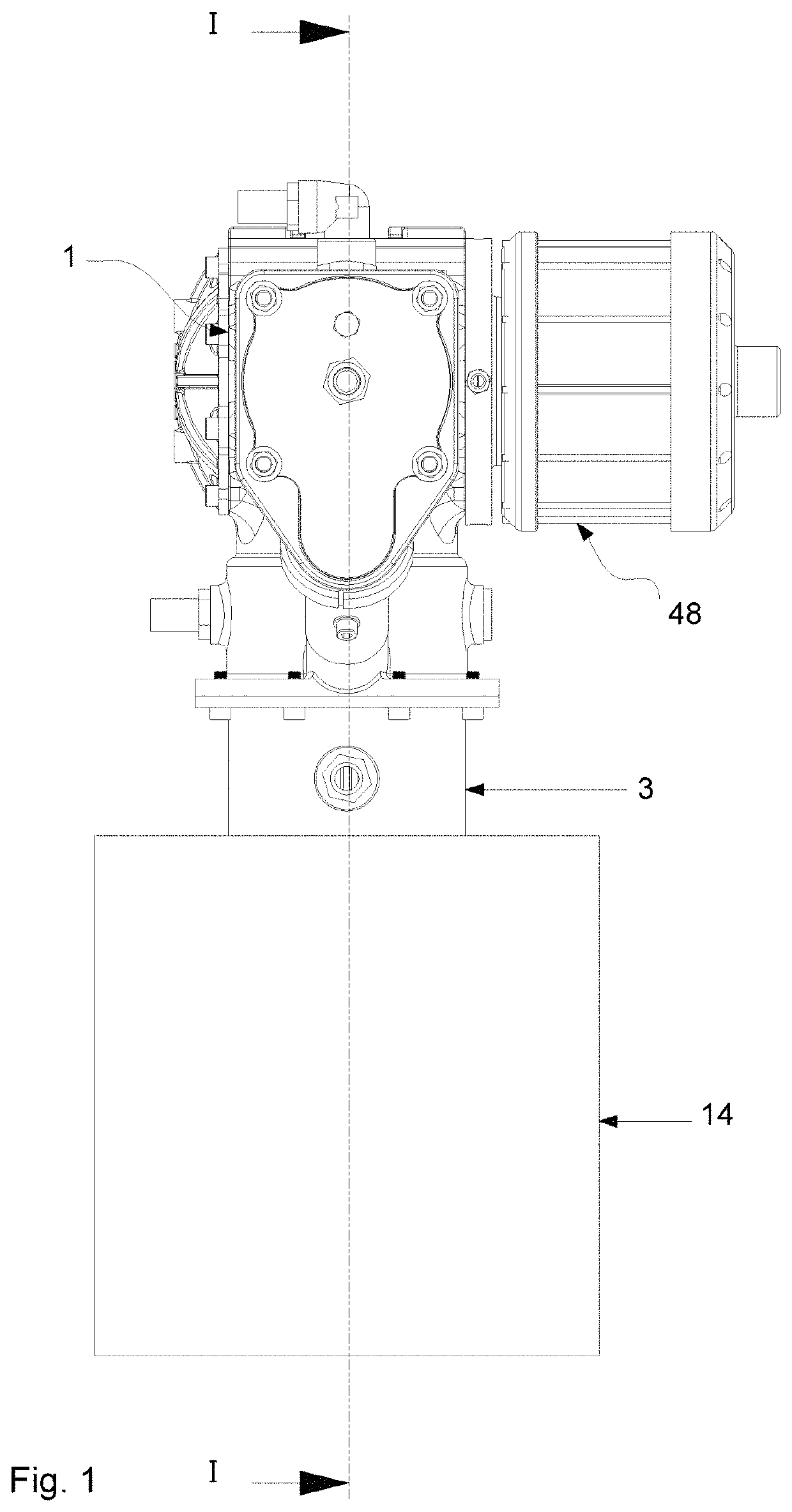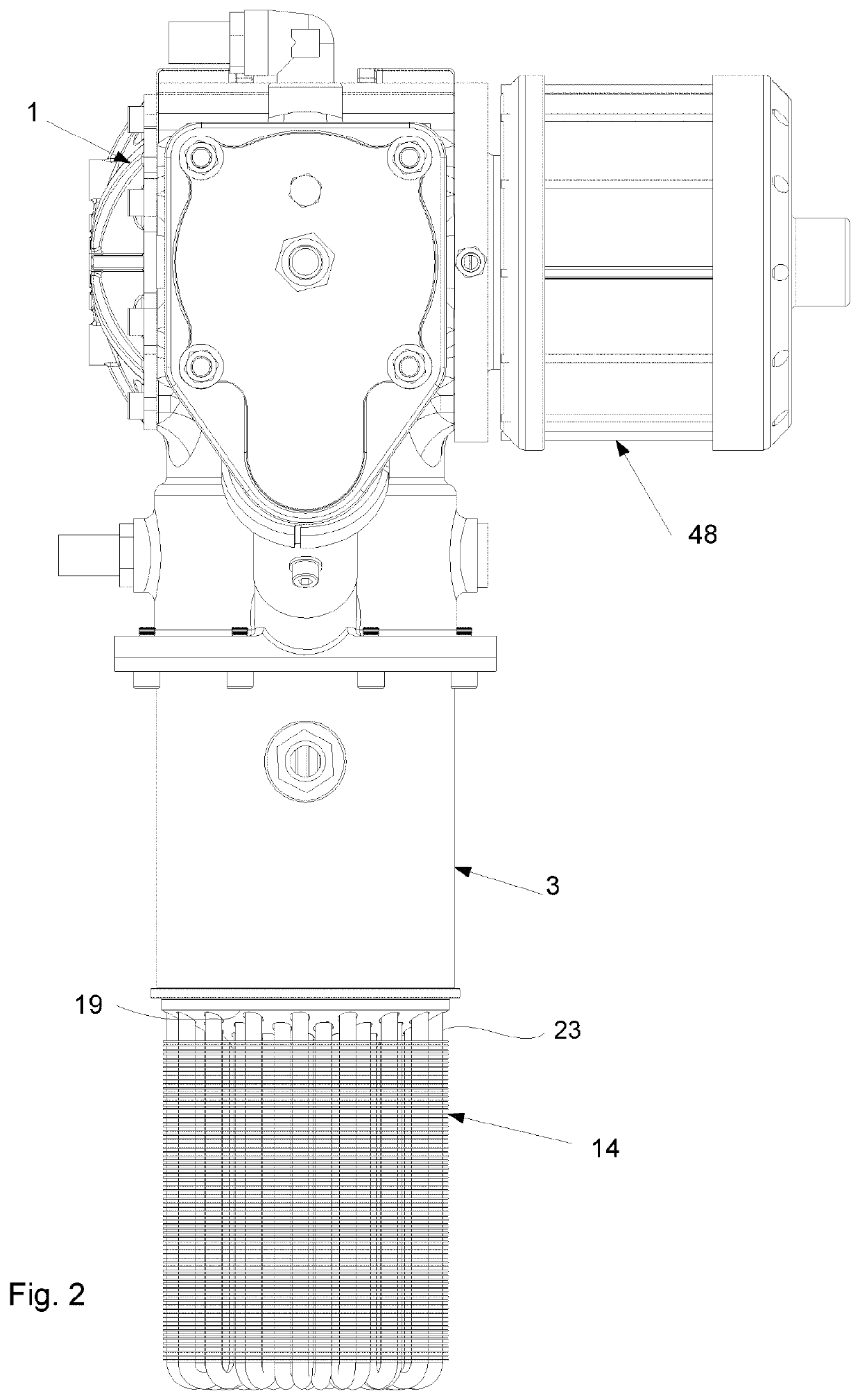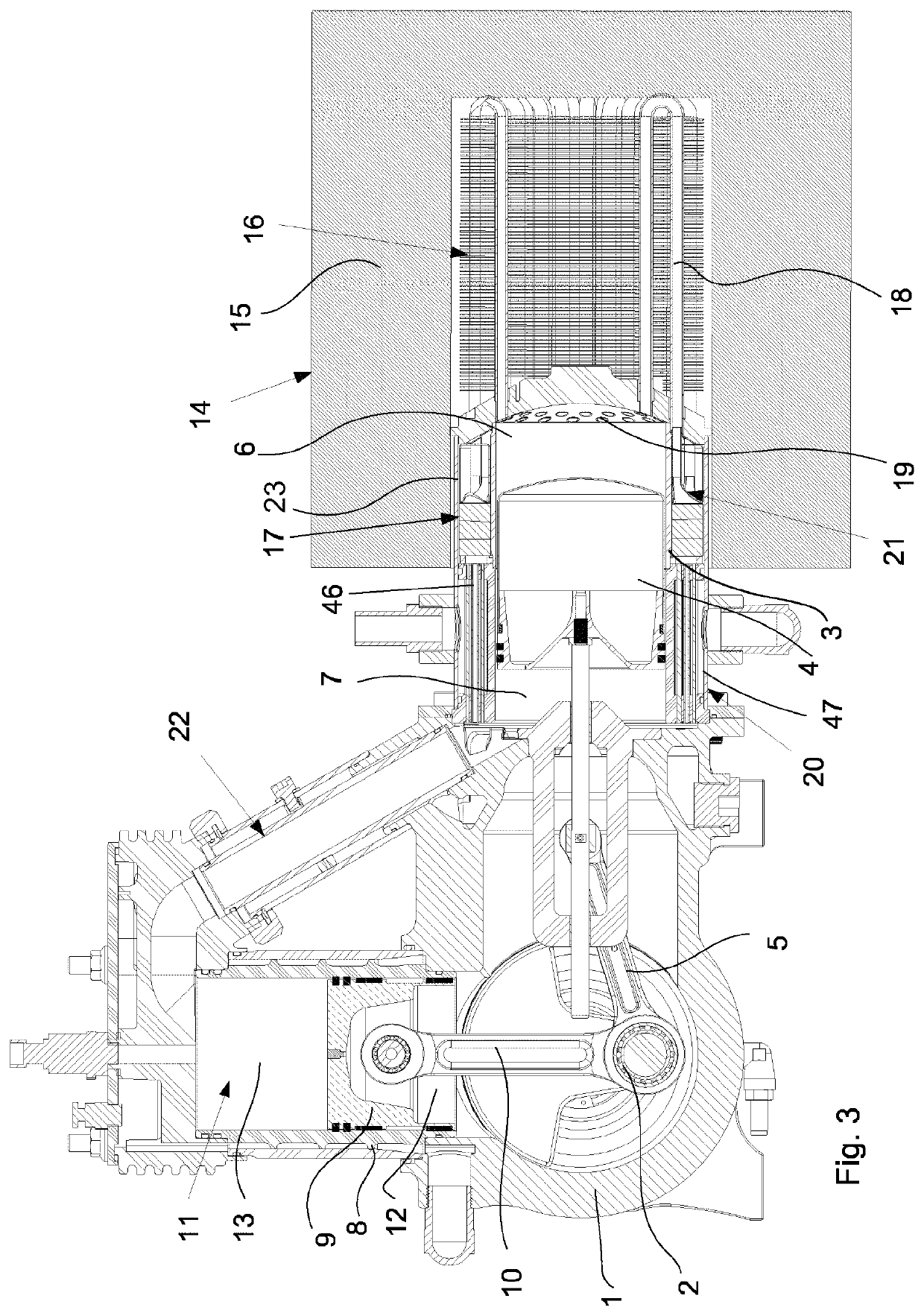Stirling engine comprising metal foam regenerator
a metal foam and engine technology, applied in the direction of engines, machines/engines, hot gas positive displacement engine plants, etc., to achieve the effects of low pressure drop, high thermal stability and fatigue strength, and efficient heat exchang
- Summary
- Abstract
- Description
- Claims
- Application Information
AI Technical Summary
Benefits of technology
Problems solved by technology
Method used
Image
Examples
Embodiment Construction
[0034]FIGS. 1-3 show an example of a Stirling engine according to the present disclosure. The Stirling engine shown is of gamma type and comprises a crank case 1 with a crank shaft 2 arranged therein, and a displacer cylinder 3 with a reciprocatingly arranged displacer piston 4 therein. The displacer piston 4 is connected to the crank shaft 2 via a connecting rod 5 extending through a first end of said displacer cylinder 3. During operation of the Stirling engine, the displacer cylinder 3 defines a hot chamber 6 and a cool chamber 7 separated by the displacer piston 4.
[0035]The Stirling engine further comprises a working cylinder 8 with a reciprocatingly arranged working piston 9 therein, said working piston 9 being connected to the crank shaft 2 via a connecting rod 10 extending through a first end of the working cylinder 8. A working cylinder chamber 11 defined by the working cylinder 8 is divided by the working piston 9 into a first part 12, through which said connecting rod 10 e...
PUM
 Login to View More
Login to View More Abstract
Description
Claims
Application Information
 Login to View More
Login to View More - R&D
- Intellectual Property
- Life Sciences
- Materials
- Tech Scout
- Unparalleled Data Quality
- Higher Quality Content
- 60% Fewer Hallucinations
Browse by: Latest US Patents, China's latest patents, Technical Efficacy Thesaurus, Application Domain, Technology Topic, Popular Technical Reports.
© 2025 PatSnap. All rights reserved.Legal|Privacy policy|Modern Slavery Act Transparency Statement|Sitemap|About US| Contact US: help@patsnap.com



